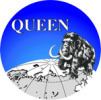 | ||
Quaternary Environment of the Eurasian North, abbreviated QUEEN was an international and interdisciplinary research programme in the Arctic.
Contents
QUEEN was established to understand the processes involved in environmental changes in the Arctic region by studying past environmental changes during the Late Cenozoic era. A primary objective of QUEEN was to make the environmental record and the history of glaciation during the last 250,000 years as complete for Eurasia as elsewhere. Regions of particular importance for understanding the Arctic's role in global climate change are the Eurasian shelves and the land masses south of these, including Siberian permafrost. The ice sheets in these regions are key elements in paleoclimatic models and play a vital role in the reconstruction of a continuous paleoenvironmental record. Special effort was devoted to the correlation of records from different sources across the Arctic. The programme was running between 1996 and 2003 under the umbrella of the European Science Foundation (ESF) and was coordinated by Prof. Dr. Jörn Thiede.
Objectives
on continental shelves, and in the deep sea of the Arctic Ocean along the Eurasian continental margin.
tools and dating methods.
palaeontological evidence.
through the glacial-interglacial cycles by numerical modeling.
vertical movements of the underlying earth surface.
change.
the last glacial maximum and deglaciation (<30,000 yr BP).
